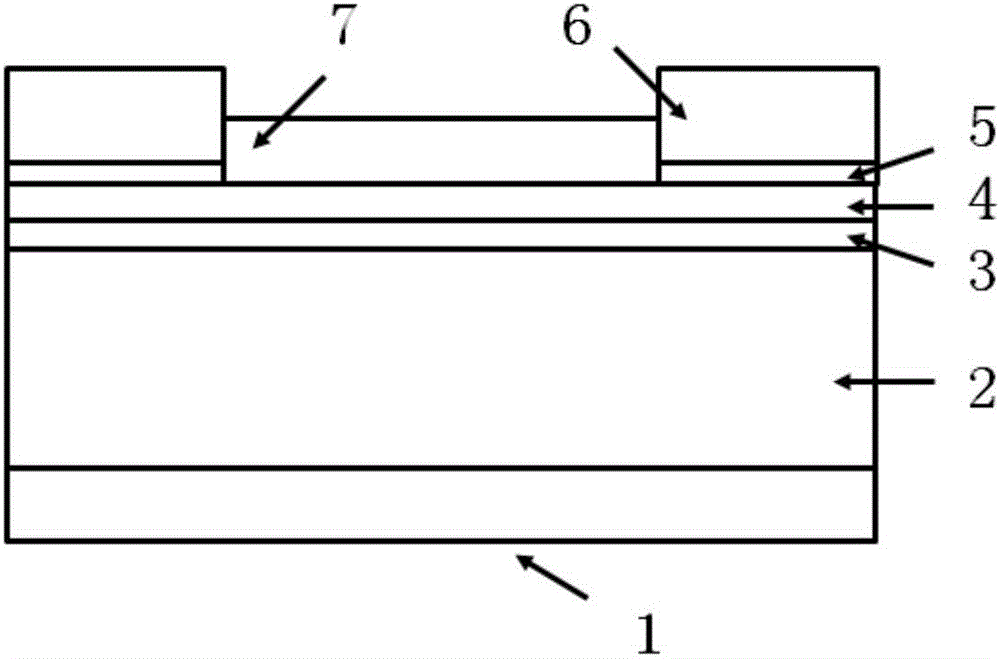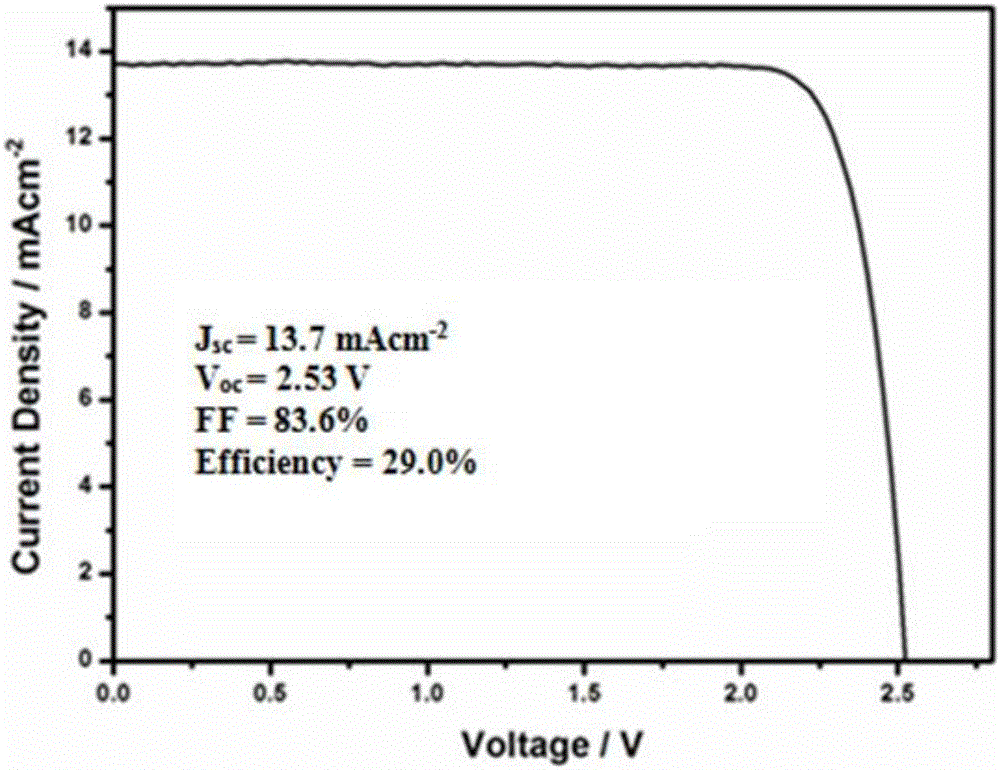Graphene/gallium arsenide solar battery
A solar cell and gallium arsenide technology, applied in the field of solar energy, can solve the problems of improving photoelectric conversion efficiency of gallium arsenide solar cells, increasing photogenerated carrier recombination centers, large series resistance and recombination current, etc., to reduce shading loss, The effect of promoting lateral transport and increasing fill factor
- Summary
- Abstract
- Description
- Claims
- Application Information
AI Technical Summary
Problems solved by technology
Method used
Image
Examples
preparation example Construction
[0050] The method for preparing the solar cell in the present invention is not particularly limited, and may be a method for preparing a solar cell well known to those skilled in the art, preferably including the following steps:
[0051] 1) transfer the graphene to the surface of the window layer on the surface of the gallium arsenide epitaxial wafer to form a graphene layer;
[0052] 2) Prepare a heavily doped gallium arsenide cap layer on the surface of the graphene layer;
[0053] 3) Prepare the back electrode on the surface of the gallium arsenide epitaxial wafer substrate, and prepare the front electrode on the surface of the heavily doped gallium arsenide cap layer;
[0054] 4) Corroding the heavily doped gallium arsenide cap layer between the front electrode grid lines by chemical etching to expose the graphene layer, and preparing an anti-reflection layer on the surface of the exposed graphene layer.
[0055] Preferably in the present invention, a cleaning step is al...
Embodiment 1
[0063] 1) Place the single-junction GaAs cell epitaxial wafer with the structure of GaAs / GaAs in acetone, isopropanol, and absolute ethanol, respectively, and heat it in a 60°C water bath for 15 minutes, then rinse it with deionized water for 10 minutes, and then place it in in HCl:H 2 Soak in the solution of O=1:10 at room temperature for 1min, finally wash with deionized water and blow dry with nitrogen;
[0064] 2) transfer the monolayer graphene to the window layer on the surface of the epitaxial wafer by electrochemical method;
[0065] 3) Depositing a heavily doped gallium arsenide cap layer on the graphene layer by MOCVD;
[0066] 4) Prepare the positive electrode pattern on the surface of the heavily doped gallium arsenide cap layer by photolithography technology, and prepare the alloy back electrode and positive electrode of nickel, germanium and gold by electron beam evaporation method, remove the photoresist and alloy, and then The epitaxial wafer placed in NH 3 ...
Embodiment 2
[0075] 1) Place a single-junction GaAs cell epitaxial wafer with a structure of GaAs / Ge in acetone, isopropanol, and absolute ethanol at 50°C for 20 minutes, rinse with deionized water for 10 minutes, and then place in H 2 SO 4 :H 2 o 2 :H 2 Soak in the solution of O=1:8:500 at room temperature for 3min, finally wash with deionized water and blow dry with nitrogen;
[0076] 2) transfer three layers of graphene to the window layer on the surface of the epitaxial wafer by electrochemical method;
[0077] 3) Depositing a heavily doped gallium arsenide cap layer on the graphene layer by MOCVD;
[0078] 4) Prepare the positive electrode pattern on the surface of the heavily doped gallium arsenide cap layer by photolithography technology, and prepare the alloy back electrode and positive electrode of nickel, germanium, silver and gold by electron beam evaporation method, remove the photoresist and alloy, Then place the epitaxial wafer in C 6 h 8 o 7 :H 2 o 2 :H 2 Erosion ...
PUM
 Login to View More
Login to View More Abstract
Description
Claims
Application Information
 Login to View More
Login to View More - R&D
- Intellectual Property
- Life Sciences
- Materials
- Tech Scout
- Unparalleled Data Quality
- Higher Quality Content
- 60% Fewer Hallucinations
Browse by: Latest US Patents, China's latest patents, Technical Efficacy Thesaurus, Application Domain, Technology Topic, Popular Technical Reports.
© 2025 PatSnap. All rights reserved.Legal|Privacy policy|Modern Slavery Act Transparency Statement|Sitemap|About US| Contact US: help@patsnap.com


